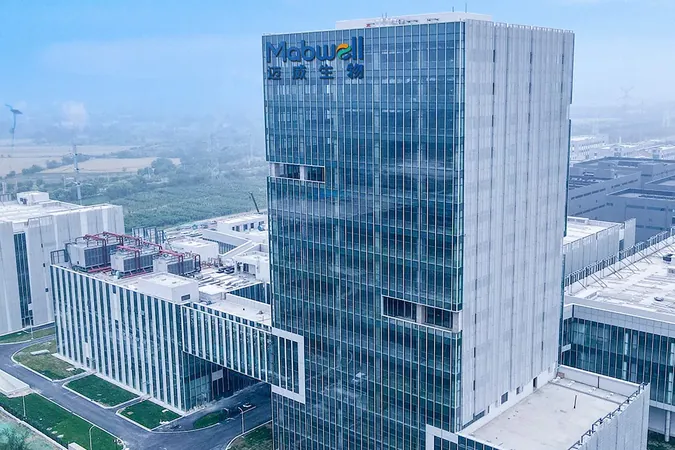
Is Parker Solar Probe's Historic Sun Encounter a Cosmic Success? Scientists Eagerly Await Signal!
2024-12-26
Author: Ting
NASA's Parker Solar Probe Completes Groundbreaking Flyby
As the scientific community holds its breath, NASA's Parker Solar Probe has recently completed a groundbreaking flyby of the sun on Christmas Eve, and scientists are now wondering: Did their ambitious mission succeed, or has their probe become a charred remnant floating through space?
After its exhilarating approach to the sun, the Parker Solar Probe is expected to send home a simple yet crucial “status beacon” by Friday, December 27. This signal will reassure its team on Earth about its well-being and functioning. Despite the perilous conditions it faced, including potential temperatures soaring to 1,800 degrees Fahrenheit (980 degrees Celsius), scientists maintain optimism about the probe’s survival.
Record-Breaking Proximity and Speed
In a video update, Nicola Fox, NASA's associate administrator for science missions, declared, "Right now, Parker Solar Probe is flying closer to a star than anything has ever been before." This cutting-edge spacecraft zoomed through the sun's atmosphere within a staggering 3.8 million miles (6.1 million kilometers) of its surface, marking the closest approach ever achieved by any human-made object. At the blistering speed of 430,000 mph (690,000 kph), it not only set records for proximity to our sun but also for speed among spacecraft.
Awaiting Status Beacon and Science Data
Scientists communicated with the Parker Solar Probe last on December 20, when it transmitted good news indicating that all systems were operational. The team's next contact is anticipated just before midnight on December 27 at the Johns Hopkins University Applied Physics Laboratory in Laurel, Maryland. According to spokesperson Michael Buckley, this signal will only confirm the probe's basic health, but a more detailed report is scheduled for New Year’s Day.
On January 1, the Parker Solar Probe will transmit its first telemetry and housekeeping data, crucial for evaluating whether it successfully collected scientific observations during its close encounter. This data will provide insights into the probe’s functionality and the status of its data recorders, a key element for the mission's ongoing success.
Mission Objectives and Future Plans
Launched in 2018, the Parker Solar Probe set out to explore the sun's intricacies and uncover the mystery of why the sun’s corona is significantly hotter than its surface. To achieve the incredible closeness necessary for its mission, the probe employed gravity assists from Venus, completing seven flybys to build up speed and getting increasingly close with each orbit.
The historic flyby on December 24 was the probe’s 22nd journey around the sun and is expected to facilitate greater scientific understanding. NASA plans for at least two more orbits with similar proximity to the sun in the near future, allowing scientists to gather unprecedented data.
A Bold Exploration for Cosmic Understanding
“The Parker Solar Probe is a hallmark of NASA's bold exploration, undertaking challenges no other mission has confronted to answer age-old cosmic queries,” noted Arik Posner, program scientist for Parker Solar Probe at NASA Headquarters in Washington.
If the data transmission goes according to plan, mission officials hope to start receiving the first science data from this momentous flyby by the end of January. What revelations will the Parker Solar Probe bring back from its solar odyssey? The world waits in anticipation!




 Brasil (PT)
Brasil (PT)
 Canada (EN)
Canada (EN)
 Chile (ES)
Chile (ES)
 España (ES)
España (ES)
 France (FR)
France (FR)
 Hong Kong (EN)
Hong Kong (EN)
 Italia (IT)
Italia (IT)
 日本 (JA)
日本 (JA)
 Magyarország (HU)
Magyarország (HU)
 Norge (NO)
Norge (NO)
 Polska (PL)
Polska (PL)
 Schweiz (DE)
Schweiz (DE)
 Singapore (EN)
Singapore (EN)
 Sverige (SV)
Sverige (SV)
 Suomi (FI)
Suomi (FI)
 Türkiye (TR)
Türkiye (TR)